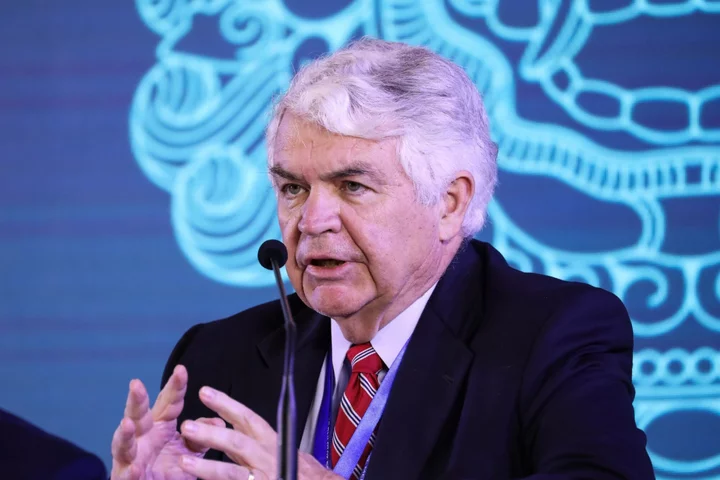Bank of Japan Governor Kazuo Ueda would likely scrap the world’s last negative policy rate sooner rather than later if he applies the same rule he cited to vote against a rate hike over two decades ago.
Ueda, then a BOJ board member, referred to the Taylor Rule in explaining why he couldn’t support the end of the central bank’s zero interest rate in August 2000. His decision to dissent won plaudits after the fact when the bank was forced to return to zero just six months after the board voted to hike.
“I estimated the optimal policy interest rate using the Taylor Rule, and the result was that the optimal rate was rising but the level was still negative,” Ueda said in a speech in September 2001. “This was the main reason why I voted against terminating the zero interest rate policy.”
While Ueda made it clear the Taylor rule isn’t a benchmark the bank uses, and he referred to it merely to illustrate his analytical approach around that time, he later cited the rule once again when discussing the appropriate level of interest rates in Japan and the US in a contribution to the Nikkei newspaper in 2014.
Kentaro Koyama, chief Japan economist at Deutsche Securities and a former BOJ official, said the current economic situation is very different from 2000. He forecasts the bank will scrap its negative interest rate in January. According to his calculations, the Taylor Rule would generate a policy rate in Japan of 7% based on current criteria.
“While we need to view the policy rates based on the rule with considerable latitude, this turnaround to a clear positive level means that the bank can maintain an accommodative monetary stance even if NIRP is withdrawn,” Koyama said, referring to the negative interest rate policy. “We believe that the present policy error risk is ending NIRP too late, giving way to further yen depreciation alongside elevated inflation.”
There has been much debate over the usefulness of the Taylor Rule and its modified versions since it was first published in 1993 by John Taylor, a Stanford University professor.
Read more: Fed Needs to Hike Rates a Bit More, Taylor-Rule Creator Says
Former Federal Reserve St. Louis branch chief James Bullard posted an update to his Taylor Rule framework in June just before he stepped down. In the post he suggested policy at the time was at the lower end of the “sufficiently restrictive” range, even though inflation remained too high.
“Monetary policy should be systematic, not automatic,” Ben Bernanke, a former Federal Reserve chair, wrote in 2015. “The simplicity of the Taylor rule disguises the complexity of the underlying judgments that FOMC members must continually make if they are to make good policy decisions.”
“Ueda probably used the Taylor rule because it’s a tool that’s easy to understand,” said Tetsuya Inoue, Ueda’s former secretary when he was a BOJ board member. “The BOJ must be assessing it internally, but it’s not the only thing they are watching. Using the Taylor rule may be harder now especially after changes in the economy after the pandemic.”
Toshitaka Sekine, former BOJ chief economist, shared a similar view. He said probably all central banks make the calculation. It’s not the sole indicator they depend upon in their deliberations, but it can highlight distortions that need rectifying.
“There’s no need to follow the rule mechanically. It’s a tool for posing yourself a question,” Sekine said. “If reality is deviating from the Taylor rule for too long, it’s going to make you feel uncomfortable when your put your hand on your heart. That’s when it can be an indication of the need for policy change.”
--With assistance from Masahiro Hidaka.

